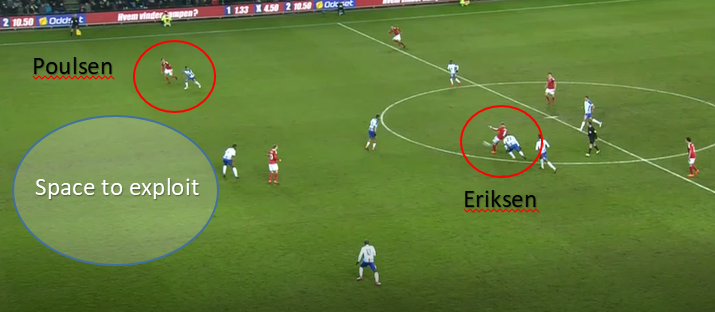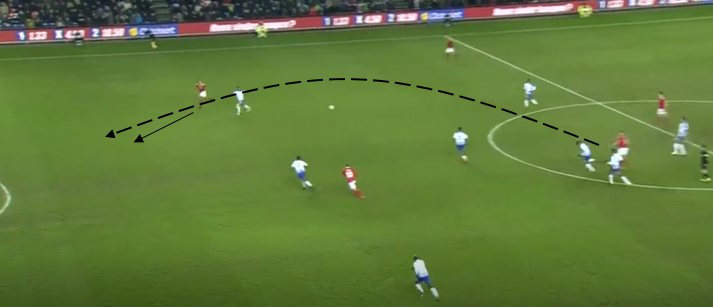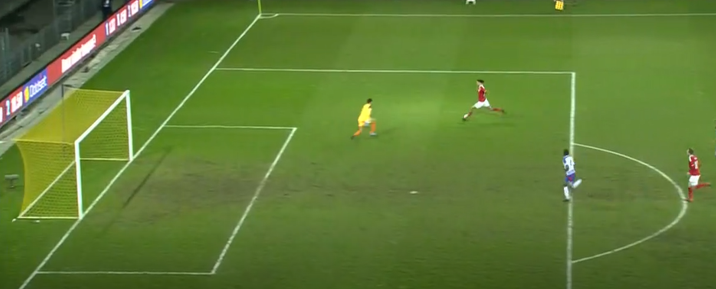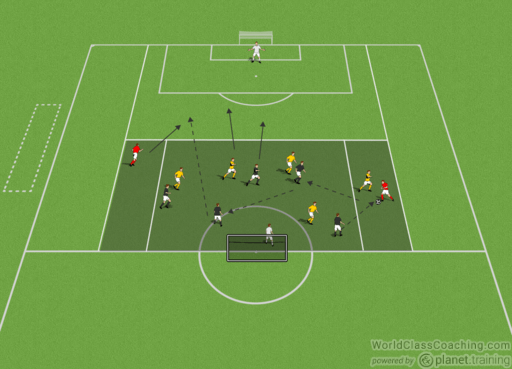By Philip Joe Cauchi
Within a 1-4-3-3 system of play the wingers’ function might differ according to the role within the team and their playing characteristics. However, a common aim we find in all wingers is to stretch the opposition’s defence to create gaps in the back line. They themselves might use this space (as we will see in the below shots), or create it for their teammates, typically midfielders and full backs, to exploit.
Playing characteristics of modern wingers during the attacking phase:
Take on full backs in 1v1.
Change of pace with and without the ball.
Get free of marking to receive the ball and play facing the goal against the defender.
Support teammates to outnumber opponents on the flank, such as create 2v1 overloads with the full back against the opposition’s full back.
Overload central area by cutting inside with the ball or play proximal to the strikers. This creates space for the full back to push up the flank and provide width in attack.
Location on field: Attacking third.
Team complexity level: Inter-sector: Midfield and attack.
Team tactical requirement (macro principle of play): Stretch the opponents to create space in central areas.
Inter-sector tactical requirements (sub-principles of play):
Create width in order to stretch the opposition’s defence and also to create options to switch the point of attack.
Create depth to penetrate the opposition’s defence.
Angles and distances between the midfielders, wingers and striker to combine play.
Individual tactical and technical requirements (Sub-sub-principles of play):
Stance to keep the ball in focus.
Move to the blind side of the defender.
Timing and direction of runs.
Game Situation taken from the international friendly match between Denmark and Panama played on the 22nd of March 2018.

Figure 1: Poulsen starts wide managing to take Panama’s left full back with him and create space in the central channel. Panama are playing with a high line of restraint. Through visual contact between Poulsen and Eriksen, the latter recognises Poulsen’s stance; that he wants the ball to be played centrally behind the backline. Timing of the run is key for Poulson not get caught offside. The weight and direction of the pass from Eriksen is vital for this soccer action to be successful.

Figure 2: Starting from the full back’s blind side, enables Poulsen to make the defender lose track of him as the latter has only the ball in his field of vision.

Figure 3: Poulsen earned enough space to get into a 1v1 situation with the goalkeeper by making the defender lose track of him.
Training Exercise - Playing with attacking wingers against a high line of restraint

Figure 4: Small sided game to develop the ability of the team to play deep balls behind the defence. Players will also learn when and how to pass deep, when to retain possession, and the wingers to time their runs.
Setup: Area is 55 yards by 45 yards divided into two horizontal zones – the high zone and the low zone (dark shaded area). The five players from each team start in the low zone. In each flank channel there is a neutral winger while a goalkeeper is positioned in each goal.
Execution: Whenever the ball goes out of playing bounds or a goal is scored, play always starts by the black team (attackers) from their goalkeeper in the attacking team’s low zone, therefore no restarts take place. The neutral wingers are restricted to remain inside their channel except when a through pass is played as shown in figure 4. Wingers may be tackled inside their zone but are allowed to score for either team in possession. If a successful pass is played, wingers play 2v1+goalkeeper with another teammate against a defender and the goalkeeper.
Variations:
1. Play with more players and use the whole width of the pitch.
2. Play without any neutral players and have the attacking team (blacks) play with seven players against five of the yellows’. Two of the black team’s players remain inside their flank zone until a successful through pass is played.
Progressions:
1. Have two defenders track back to defend and two attackers to follow the attack in the high zone. Therefore a 3v2 situation in favour of the attackers takes place after the through pass.
2. Once a through pass is played, all players are free to move into the high zone to attack or defend.
3. Through passes may be played to any player of the attacking team not only to the wingers.
4. Have all teams play with equal numbers and no neutral players. However, the attacking team (blacks) should have a winger in each flank zone when in possession of the ball.
Training volume: Three blocks of three minutes each interspersed with two minutes of recovery. This is an exercise that develops speed in attack and also counter-attacking at pace. It should therefore be played in short blocks with adequate recovery time, thus keeping the quality of the football actions high.
Philip Joe Cauchi works as performance coach in Malta. He holds a UEFA A and a UEFA A Youth Elite coaching licences as well as a B.ed (Hons) in Education with Physical Education and is also a qualified football conditioning coach.


